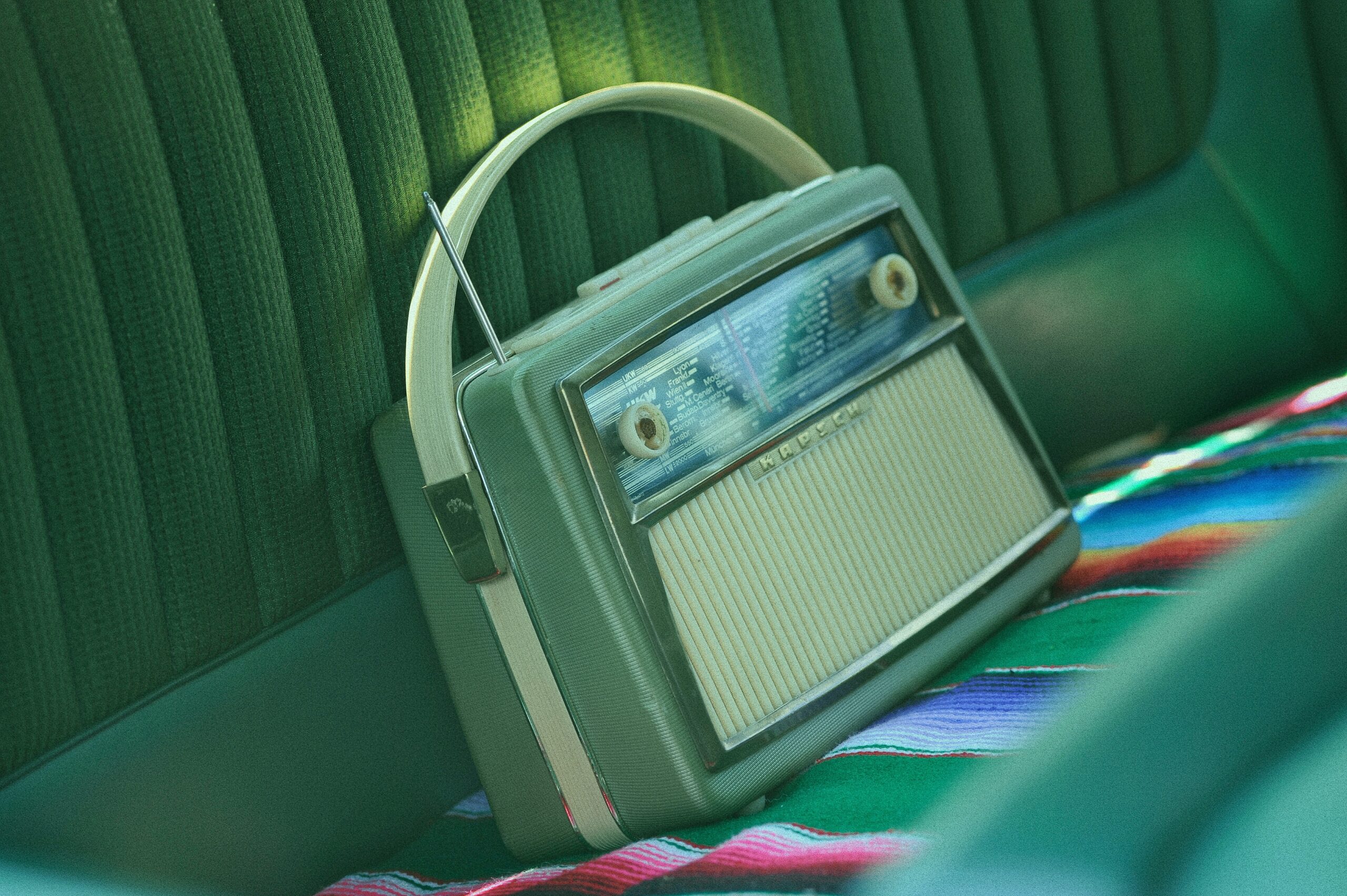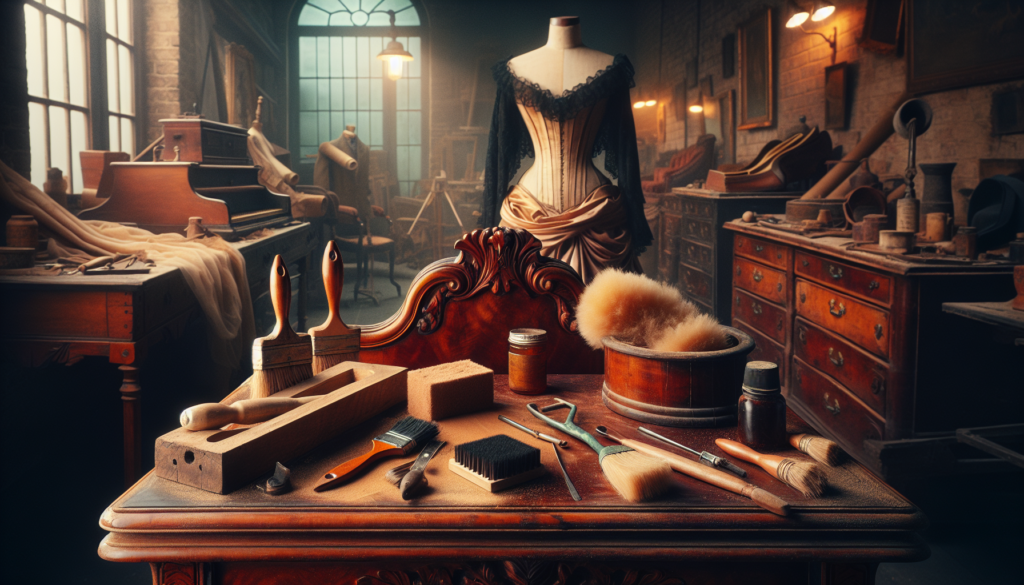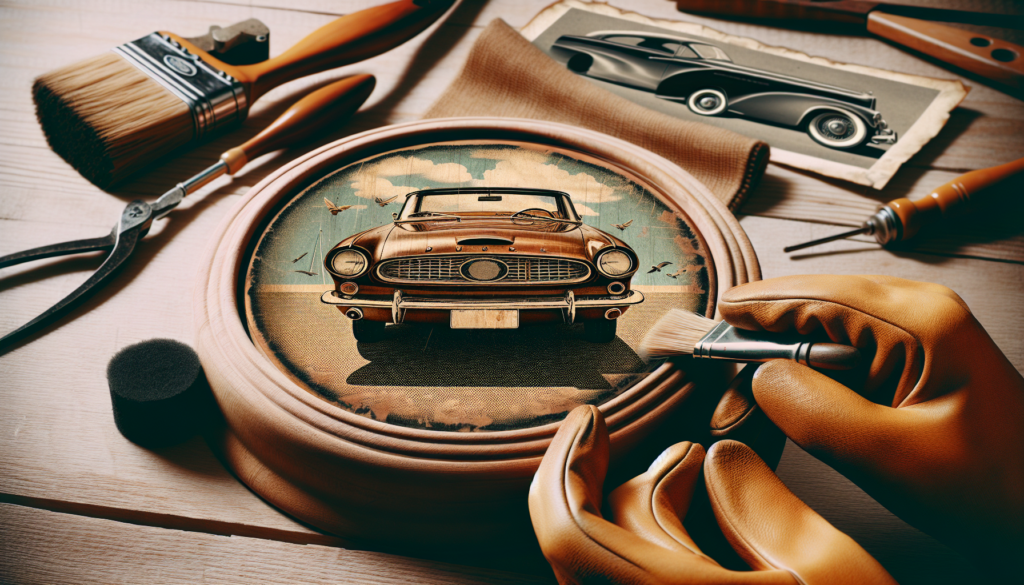
If you’re a fan of vintage pieces or have stumbled upon a beautiful antique that needs some love, you might be wondering how to restore it to its former glory. Luckily, we’ve got you covered with some valuable tips and tricks! Whether it’s a worn-out chair, a scratched table, or a faded painting, restoring vintage pieces can be a fulfilling and rewarding endeavor. From researching the piece’s history to carefully cleaning and repairing it, we’ll guide you through the process step by step, so you can transform your cherished antique into a show-stopping centerpiece for your home. So, let’s roll up our sleeves and bring these timeless treasures back to life!
Assessing the Condition of the Piece
When embarking on a restoration project for a vintage piece, the first step is to carefully assess its condition. This initial assessment will help you determine the extent of the restoration needed and the appropriate steps to take. There are three key aspects to consider when assessing the condition of a piece: identifying damage, checking for structural issues, and assessing the overall condition.
Identifying Damage
Take a close look at the piece and identify any visible damage. This could include scratches, chips, stains, or other signs of wear and tear. Make notes of the areas that require attention, as this will guide your restoration process. By accurately identifying the damage upfront, you can plan your restoration steps accordingly and ensure a thorough restoration.
Checking for Structural Issues
While assessing the condition, it’s crucial to check for any structural problems. Look for loose joints, wobbly legs, or weakened support structures. Structural issues require careful attention, as they can affect the stability and longevity of the piece. If you discover any structural problems, prioritize addressing them early on in the restoration process.
Assessing the Overall Condition
Finally, take a step back and assess the overall condition of the piece. Consider factors such as the state of the finish, the level of wear and tear, and any alterations or modifications that may have been made over the years. This broader assessment will help you determine the amount of work required and set realistic expectations for the final outcome of the restoration.
Researching the Piece
Before you begin the actual restoration work, it’s essential to conduct thorough research on the vintage piece. This research will provide you with valuable information about the piece’s era, style, manufacturer, and proper restoration techniques.

Identifying the Era and Style
Understanding the era and style of the piece will help you make informed decisions during the restoration process. Look for visual clues such as unique design elements, materials used, or specific characteristics that can help identify the piece’s era and style. Consult books, online resources, or experts in the field to gather information about the piece’s historical context.
Finding Original Manufacturer Information
If possible, try to find original manufacturer information for the vintage piece. This can include labels, markings, or any documentation that may provide insights into the piece’s origin. With this information, you can better understand the craftsmanship, materials, and techniques used during its creation. Original manufacturer information can also add value to the piece if you plan to sell it after restoration.
Learning about Proper Restoration Techniques
Every vintage piece is unique, and different materials and finishes require specific restoration techniques. Research and educate yourself on the proper restoration techniques for the specific type of piece you are working on. This knowledge will guide you in preserving the authenticity and integrity of the piece throughout the restoration process. Consult restoration professionals, join relevant forums or online communities, or refer to restoration guides to ensure you follow best practices.
Cleaning and Stain Removal
Cleaning the vintage piece is an essential step in the restoration process. Over time, dust, dirt, and stains can accumulate, masking the original beauty of the piece. Proper cleaning techniques will help reveal the true character of the vintage item.

Dusting the Surface
Start by gently dusting the surface of the piece. Use a soft cloth or a feather duster to remove loose dirt and debris. Be cautious not to apply too much pressure, as it can cause further damage or scratches. Carefully clean intricate details and hard-to-reach areas to ensure a thorough dusting.
Removing Dirt and Grime
Once the surface is dust-free, assess if there is any embedded dirt or grime. Use a mild detergent or soap specifically formulated for delicate surfaces, along with a soft brush or sponge, to gently remove the dirt. Avoid harsh chemicals or scrubbing vigorously, as they can harm the finish or the underlying material. Rinse with a clean, damp cloth to ensure all residue is removed.
Treating Stains
Stains on vintage pieces can be quite challenging to remove, especially if they have set in over time. Approach stain removal with caution, as improper techniques can further damage the piece. Start by testing any stain removal method on a small, inconspicuous area to ensure it doesn’t cause adverse reactions.
For different types of stains, targeted treatments may be necessary. For example, for water stains on wood, using a mixture of equal parts vinegar and olive oil can help lift the stain. For ink stains, applying a paste of baking soda and water, leaving it overnight, and then gently wiping it away with a damp cloth might do the trick. Always follow up with appropriate cleaning and conditioning to restore the piece’s original luster.
Repairing Structural Damage
Structural damage can significantly impact the functionality and stability of a vintage piece. Repairing such damage requires careful attention to detail and skilled craftsmanship. Here are some common structural repairs you may encounter during the restoration process.

Fixing Loose Joints
Over time, joints in vintage furniture can come loose, resulting in wobbliness or instability. To fix loose joints, carefully disassemble the affected area, clean out any debris or old glue, and apply a strong wood adhesive. Clamp or secure the joints and allow sufficient drying time according to the adhesive manufacturer’s instructions. Reinforce the joints if necessary, ensuring the piece is solid and stable before proceeding.
Replacing Missing Parts or Pieces
Occasionally, vintage pieces may have missing parts or pieces. Assess whether these missing elements can be replicated or restored. If possible, seek out replacements that closely match the original design. Alternatively, consult skilled craftsmen who specialize in replicating vintage parts to ensure a seamless and authentic restoration.
Repairing Cracks or Splits
Cracks or splits in wood or other materials can occur due to age, changes in humidity, or mishandling. Repairing such damage requires precision and patience. Begin by cleaning the area around the crack or split, ensuring it is free from debris or loose fragments. Apply a suitable wood filler, epoxy, or adhesive that matches the color and texture of the surrounding material. Follow the product instructions carefully, allowing ample time for drying and curing. Once the adhesive has dried, carefully sand and blend the repaired area to create a smooth and cohesive finish.
Refinishing and Painting
Refinishing or painting a vintage piece can breathe new life into it, enhancing its appearance and preserving its longevity. However, this process requires careful consideration of the piece’s original finish, its historical value, and your intended outcome.

Stripping Old Paint or Finish
If the vintage piece has layers of old paint or finish that need to be removed, stripping is the first step. Start by ensuring you are working in a well-ventilated area and wearing protective gloves, goggles, and a mask. Choose a suitable paint stripper or finish remover specifically designed for the material you are working on. Follow the product instructions for application and removal, using a scraper or brush to gently lift the old layers. Be cautious not to damage the underlying material while stripping.
Sanding and Preparing the Surface
After stripping the old paint or finish, the surface may require sanding to smoothen any imperfections, remove residual finish, or prepare it for painting or refinishing. Use sandpaper or sanding blocks with varying grits to achieve the desired level of smoothness. Start with a coarser grit to remove imperfections and gradually transition to finer grits for a smoother finish. Remember to sand along the grain of the wood to avoid creating scratches or blemishes.
Applying New Paint or Finish
Once the surface is properly prepared, you can apply a new paint or finish to achieve the desired look. Consider the original style and era of the piece when selecting a paint or finish. If aiming for an authentic restoration, opt for traditional finishes such as varnish, shellac, or oil-based paint. Use a brush, roller, or sprayer appropriate for the chosen medium and apply thin, even coats. Allow each coat to dry fully before applying subsequent layers. Sand lightly between coats if necessary, and finish with a protective clear coat for added durability and longevity.
Reupholstering or Replacing Upholstery
Upholstery plays a significant role in the overall appearance and comfort of a vintage piece. If the existing upholstery is worn, damaged, or no longer suitable, reupholstering or replacing the fabric and cushioning can revitalize the piece.

Removing Old Upholstery
Start by carefully removing the old upholstery, using a staple remover or a small pry tool to detach it from the frame. Take note of the original pattern and construction to guide you during the reupholstering process. Pay attention to any hidden fasteners or attachments that may need to be disassembled before removing the fabric completely.
Choosing Appropriate New Fabric
Selecting the right fabric is crucial for achieving the desired aesthetic and durability. Consider the style of the piece, its intended use, and any historical accuracy you wish to maintain. Consult upholstery professionals or fabric suppliers who specialize in vintage materials for guidance. Ensure the fabric you choose is suitable for upholstery and aligns with your overall design vision.
Reupholstering or Replacing Cushioning
With the old upholstery removed, inspect the cushioning for damage or deterioration. If necessary, replace foam or padding to restore comfort and support. If the piece originally had horsehair or other traditional stuffing, consider consulting an experienced upholsterer who specializes in vintage techniques. Ensure the new upholstery and cushioning are properly sized, securely attached, and aligned with the piece’s original design.
Wood Restoration
Restoring the natural beauty of wood is often a central aspect of vintage piece restoration. Whether dealing with minor scratches or extensive damage, the following steps will guide you through the wood restoration process.
Repairing Scratches and Dents
Begin by assessing the depth and severity of scratches or dents on the wood surface. For minor scratches, using a fine-grade sandpaper in the same direction as the wood grain can often minimize their appearance. Deeper scratches or dents may require further attention. To repair them, apply wood filler that matches the color and grain of the wood. After the filler has dried, sand lightly to achieve a smooth surface, blending it with the surrounding wood.
Restoring the Wood’s Luster
Once the surface is smooth and free from scratches and dents, it’s time to restore the wood’s luster. Begin by cleaning the wood with a gentle wood cleaner or a mixture of mild soap and water. Remove any grime or residue, ensuring that the surface is thoroughly clean. Once dry, apply an appropriate wood restorer or wood oil to enhance the natural beauty and depth of the wood. Follow the product instructions for application and allow sufficient drying time before moving on to the next step.
Applying Wood Polish or Wax
To protect and preserve the restored wood, applying a wood polish or wax is essential. Choose a wax or polish specifically formulated for the type of wood you are working with. Apply a thin, even coat using a clean cloth or brush, following the direction of the wood grain. Allow the polish or wax to dry according to the product instructions. Once dry, gently buff the surface with a soft cloth to achieve a smooth and lustrous finish.
Metal Restoration
Metal components in vintage pieces, such as hardware or decorative details, often require special attention to restore their original beauty and prevent further deterioration. The following steps outline the metal restoration process.
Removing Rust or Tarnish
If the metal surfaces of the vintage piece are affected by rust or tarnish, it’s crucial to remove them carefully. Begin by cleaning the surface with a gentle metal cleaner or a mixture of vinegar and water. Use a soft cloth or a non-abrasive brush to remove the rust or tarnish, ensuring not to scratch the metal. Specialty metal cleaners or rust removers may be required for severe cases. Rinse the metal thoroughly and dry it completely to prevent further corrosion.
Polishing Metal Surfaces
Once the metal is free from rust or tarnish, it’s time to restore its shine and luster. Choose a suitable metal polish specific to the type of metal you are working with. Apply a small amount of polish to a soft cloth and gently rub it onto the metal surface. Use circular motions to work the polish into the metal, paying attention to intricate details or hard-to-reach areas. Continue polishing until the desired shine is achieved. For larger metal surfaces, consider using an electric polisher or a buffing wheel for more efficient results.
Applying Protective Coating
To protect the restored metal surfaces from further tarnish or corrosion, applying a protective coating is crucial. Choose a clear, protective metal coating designed for the type of metal you are working with. Apply a thin, even coat using a clean cloth or brush, following the manufacturer’s instructions. Allow the coating to dry completely before handling or assembling the piece. The protective coating will help maintain the restored metal’s shine and prevent future damage.
Hardware and Decorative Details
Hardware and decorative details are often defining features of vintage pieces. Repairing or replacing these elements can significantly contribute to the overall authenticity and charm of the restored piece.
Cleaning and Polishing Metal Hardware
To restore metal hardware, such as hinges, drawer pulls, or doorknobs, begin by removing them from the vintage piece. Use appropriate tools, such as screwdrivers or wrenches, to safely disassemble and detach the hardware. Clean the hardware using a mild metal cleaner or a mixture of vinegar and water. Use a soft cloth or a non-abrasive brush to remove dirt or grime. If necessary, polish the hardware using a suitable metal polish and follow the same steps outlined in the metal restoration section. Reassemble and attach the restored hardware securely, ensuring proper alignment and functionality.
Repairing or Replacing Decorative Details
In vintage pieces, decorative details may be missing, damaged, or require repair. Assess the condition of the decorative elements, such as carvings, inlays, or moldings. Determine whether repairs can be made or replacements are necessary. For minor damage, using wood fillers, epoxy, or proper adhesive can restore the integrity of the decorative details. For missing or irreparable elements, consult skilled craftsmen who specialize in replicating or restoring vintage details. Ensure the repaired or replaced decorative elements match the original design and are securely attached to the vintage piece.
Ensuring Proper Alignment and Functionality
During the restoration process, it’s essential to ensure proper alignment and functionality of hardware and decorative details. Pay attention to hinges, drawer slides, or any components that affect the piece’s movement or usability. If adjustments or repairs are required, carefully disassemble and reassemble these elements. Test their functionality at each stage of the restoration process to ensure smooth operation and correct alignment. Properly functioning hardware and decorative details will enhance the overall usability and aesthetic appeal of the vintage piece.
Preserving the Piece
After investing time and effort into the restoration process, it’s crucial to take steps to preserve the restored vintage piece and ensure its long-term maintenance. To preserve the piece’s beauty and integrity, consider the following steps.
Applying Protective Finishes
To protect the restored surfaces of the vintage piece, applying a protective finish is essential. Choose an appropriate finish that is compatible with the materials used in the restoration. Common options include clear varnish, wax, or specialized coatings for wood or metal surfaces. Follow the manufacturer’s instructions for application and allow sufficient drying or curing time. The protective finish will act as a barrier against moisture, UV damage, and everyday wear, preserving the restored beauty of the vintage piece.
Using Proper Storage and Display Methods
To prevent future damage, store or display the restored vintage piece properly. Avoid exposing it to direct sunlight, extreme temperature fluctuations, or excessive humidity. If storing the piece, choose a clean and dry environment, preferably away from potential hazards or sources of damage. Use appropriate padding or covers to protect the piece from dust, scratches, or accidental impacts. If displaying the piece, ensure it is properly supported, and consider using protective coasters, mats, or glass enclosures to prevent damage from spills, pet or child interactions, or excessive handling.
Periodically Maintaining and Caring for the Restored Piece
Vintage pieces require periodic maintenance and care to ensure their longevity. Regularly check for signs of wear, loose components, or any potential damage. Keep the piece clean by dusting it regularly with a soft cloth or a feather duster. If necessary, follow the cleaning and maintenance steps outlined in the earlier sections to address specific issues. Pay attention to the condition of the finish, upholstery, and hardware, and perform any necessary touch-ups or repairs promptly. By periodically maintaining and caring for the restored piece, you can enjoy its beauty and functionality for years to come.
Restoring vintage pieces is a rewarding endeavor that allows you to revive the past and cherish its timeless beauty. By following the steps outlined in this comprehensive article, you can confidently embark on your restoration journey. Remember, thorough assessment, extensive research, and meticulous attention to detail are the keys to successfully restoring and preserving vintage pieces. So roll up your sleeves, immerse yourself in history, and breathe new life into these treasured artifacts.
